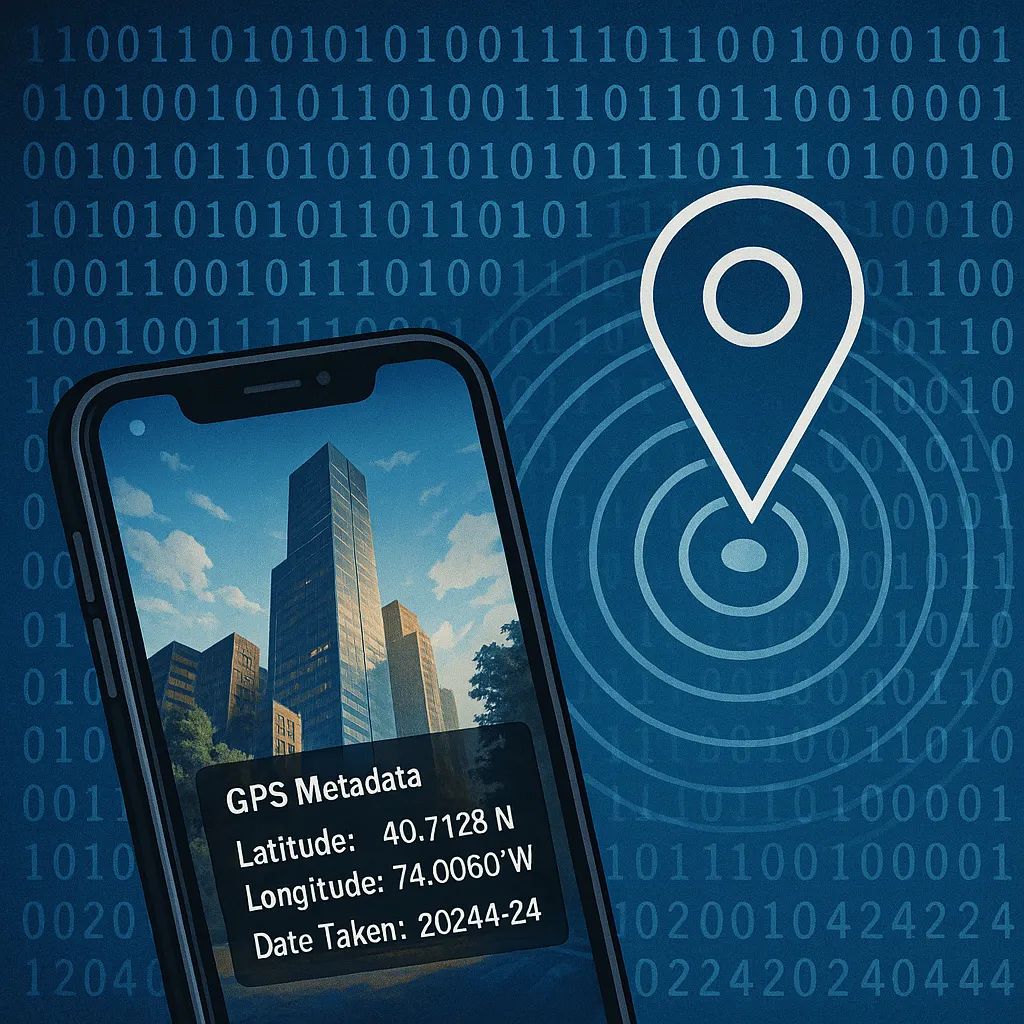⚠️ Disclaimer
This article is strictly educational and promotes legal and ethical awareness. It does not encourage any form of unauthorized data access, surveillance, or hacking. All content complies with international law and cybersecurity best practices.
🔍 Introduction: The Silent Witness in Every File
Every photo you take, email you send, or document you create carries something invisible — but powerful. It’s not the pixels or the text. It’s what rides silently alongside them: metadata.
Metadata is the DNA of digital content. It knows where you’ve been, when you were there, who you talked to, and sometimes even what device you used. In the right hands, it’s a tool. In the wrong hands, it’s a threat.
Welcome to the world of metadata — where your privacy is only as strong as your awareness.
📘 What Is Metadata?
Metadata literally means “data about data.” It’s the context behind your content — the invisible layer that explains:
| File Type | Metadata Example |
|---|---|
| Photo | GPS location, camera model, date taken |
| Sender, recipient, IP address, time sent | |
| Document | Author name, editing history, time stamps |
| Audio/Video | Codec used, duration, creation timestamp |
| Web Page | Page title, language, last modified date |
You don’t see it, but it’s there — like a digital shadow following your every move.
🎯 Real-World Examples of Metadata Exposure
1. 📸 Geotagged Photos and Stalker Risks
In 2012, a woman’s exact home address was revealed from a photo of her dog posted on Twitter. The EXIF metadata included GPS coordinates — down to her front door.
2. 📄 Leaked Docs Reveal Authors
When a British intelligence officer leaked documents, journalists discovered his real name in the document metadata, undoing his entire operation.
3. 🕵️♂️ Investigations Through Metadata
Law enforcement often builds entire criminal cases using metadata from phones, surveillance videos, and file timestamps — without ever looking at the content itself.
🔧 Where Metadata Hides
| Action | Hidden Metadata Collected |
|---|---|
| Taking a photo | Time, date, GPS, camera specs |
| Creating a Word file | Author, revision history, editing time |
| Sending an email | Sender IP, device, mail client |
| Using a PDF | Source app, software version, OS info |
| Posting online | Browser fingerprints, location, time |
Metadata is not a bug. It’s a feature. And almost everything you do online or on your device produces it.
⚠️ Why It’s Dangerous
🛑 1. It Tracks You Silently
You can turn off location tracking on Instagram, but if your photo still contains embedded GPS metadata — a stalker, employer, or stranger could locate you.
🧠 2. It Reveals More Than You Think
Metadata can expose what time you wake up, how fast you drive, what files you edited last, and even your writing style.
💰 3. It Can Be Sold
Advertisers, brokers, and data aggregators routinely extract metadata from apps and files — creating detailed behavioral profiles of users.
🔐 How to View and Remove Metadata
🧰 Tools for Viewing Metadata
| Tool | Use Case | Platform |
|---|---|---|
| ExifTool | View/edit photo metadata | Windows/Linux/macOS |
| Metadata2Go | Web-based metadata scanner | Browser |
| Doc Scrubber | Clean Word doc metadata | Windows |
| Preview (macOS) | Inspect image/document data | macOS |
🧼 How to Clean Metadata
- Windows: Right-click a file → Properties → Details → Remove Properties and Personal Information
- macOS: Export via Preview or use third-party tools
- Photos: Use apps like ImageOptim, ExifCleaner
- Docs: Save as PDF, or use tools like LibreOffice (with export options)
🛡️ Best Practices to Stay Safe
- ✅ Always strip metadata before uploading sensitive files or photos
- ✅ Use metadata cleaning tools for PDFs, DOCs, and JPGs
- ✅ Disable geotagging on smartphone cameras
- ✅ Be cautious with sharing unedited files publicly
- ✅ Regularly audit your own metadata trail using online scanners
💬 Expert Quote
“Metadata is the surveillance camera you didn’t know you installed on yourself.”
— Bruce Schneier, Security Technologist
📚 Glossary
| Term | Definition |
|---|---|
| EXIF | Exchangeable Image File Format; holds metadata for images |
| Geotagging | Embedding GPS coordinates in photos or videos |
| Header | The portion of a digital file or message that includes metadata |
| Fingerprinting | Identifying users based on unique metadata patterns |
| EXIF Cleaner | A tool to remove metadata from image files |
❓ FAQ
Is metadata illegal?
No. Metadata is a standard part of digital files. But misusing someone else’s metadata (e.g., tracking, doxxing) can be illegal depending on the jurisdiction.
Can someone hack me using metadata?
Not directly — but metadata can reveal attack vectors, such as your device model or software version, which can be exploited.
Do VPNs hide metadata?
VPNs can hide network-level metadata (IP, location), but not metadata inside your files or images.
🧠 Conclusion: Metadata Is the New Fingerprint
You don’t have to post your location for the world to find it. You don’t need to share your identity to leave your signature. Metadata does that for you.
In a world where every file tells a story, your job is to control the narrative.
Strip it. Audit it. Understand it.
Because if you don’t own your metadata — someone else will.
